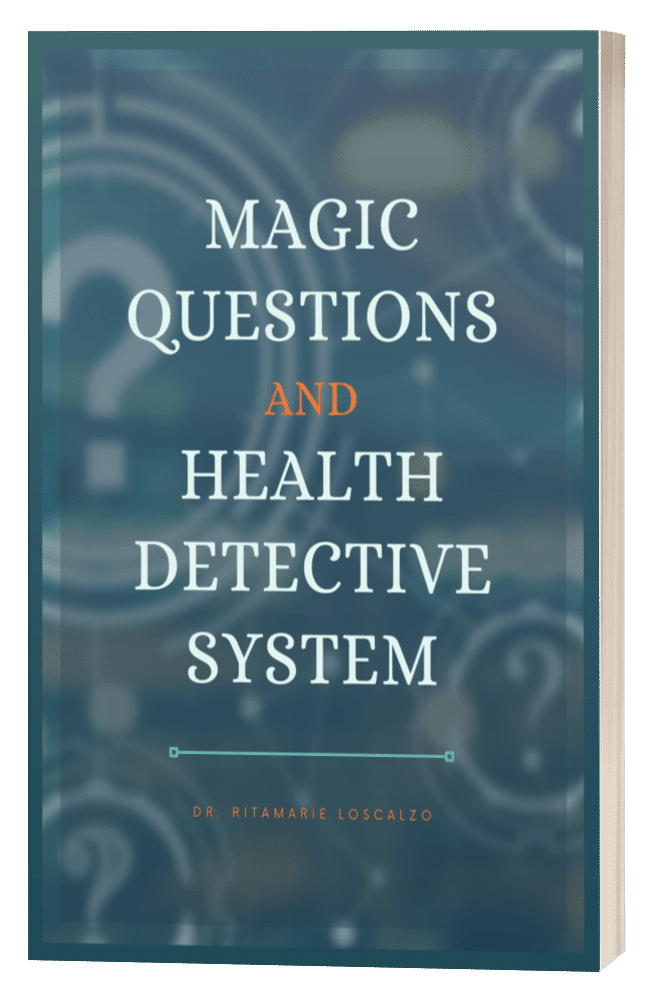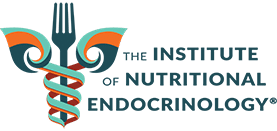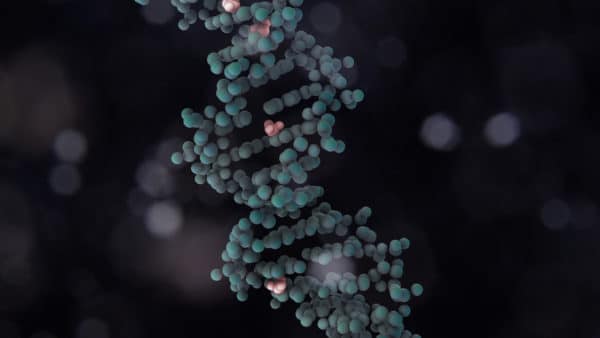HOME > reinvent healthcare podcast > Little Miracles Everywhere: Plant Phytonutrients
Little Miracles Everywhere: Plant Phytonutrients
By Ritamarie Loscalzo

As part of my series on functional foods, I want to explore some big questions:
Why should supplementation be approached with caution? How did suspected carcinogens become a common ingredient in all processed foods?
What is the “food matrix” and why is this relatively new concept key to just about everything related to food and nutrition?
Why is a varied, whole-food, plant-based diet critical to health and longevity?
Science has just scratched the surface. With each discovery comes more questions. In turn, it makes the puzzle each of us faces, in determining our best diet, all the more perplexing.
My unique elimination and provocation protocol in The Body Freedom Nutrition Lab can help, but there is still much to learn.
The science is complex and sometimes confusing. But to a geek like me, it’s also fascinating, and I believe that the better you understand basic plant food science, the easier it is to make choices that bring you and your clients closer to optimal health.
A few simple facts may change the way you look at food.
Plants: Mother Nature’s Little Miracles
Plants are nothing short of little miracles. Locked into the tissue and cell walls of every seed, stem, leaf, and flower are constituents that put the “function” in functional food.
They provide us with just about every nutrient we need to live a healthy life.
These nutrients are divided into two categories: macronutrients and micronutrients.
- Macronutrients are those plant constituents we need in large quantities such as fat, protein, carbohydrates, and fiber.
- Micronutrients, like vitamins, minerals, and phytonutrients, are needed in smaller quantities.
Micronutrients are broken down further into two sub-categories:
- “Essential” micronutrients are those nutrients the human body needs to function but can’t produce itself. They must be consumed in some way. Vitamin C and magnesium are two examples.
- “Non-essential” micronutrients are nutrients not necessary for the body to function, but have now been proven to provide protective, disease-preventing properties that contribute to overall health, wellness, and longevity. This category would include antioxidants, anti-inflammatories, and phytonutrients (also known as phytochemicals). Given their potential to reduce the risk of chronic disease, they are often now referred to as “lifespan essentials”.
Both essential and non-essential micronutrients can have similar benefits.
Vitamin C is needed by the body to form tissue, but it’s also an antioxidant similar to polyphenols. Polyphenols are a large group of protective, non-essential phytonutrients found in all plants that may boost the effectiveness of vitamin C.
Both types of micronutrients are usually found together, but it’s still not understood how one may influence the other, augmenting their effectiveness…
What’s All The Excitement About?
It’s the non-essential phytonutrients that have grabbed everyone’s attention in recent years. New, peer-reviewed research is published weekly supporting their miraculous health benefits.
They improve the immune system, vision, skin and bone health as well as heart and vascular wellness. They protect against breast, prostate, and colorectal cancer. They reduce inflammation, improve lung health, and lower blood pressure, cholesterol, and blood sugar.
The food, pharmaceutical, cosmetic, and medical industries invest billions of dollars each year trying to unravel their secrets, but it’s proving to be a challenge. What has science stumped is not so much WHAT benefits phytonutrients provide, but how they do it.
This is where I’m going to geek out for a minute, but it’s important to understand how phytonutrients work.
What Is a Compound and Why Is It Important?
All phytonutrients are made up of chemical compounds. A compound is a unique substance that forms when two or more elements, made up of molecules, combine chemically.
A compound always consists of the same molecules in the same ratio. If the molecules combine in different ratios, they form other compounds and become something completely different.
Flavonoids are phytonutrients with anti-inflammatory effects that protect your cells from the kind of damage that leads to disease.
What if it were possible to isolate the exact compound, or combination of compounds, that gives a flavonoid the ability to protect you from cancer? ( It makes the billions spent on research easier to understand, doesn’t it?)
Isolating compounds can be difficult. There has to be a “catalyst”, like heat or a solvent, that can break the chemical bonds between compounds without destroying or altering the compounds themselves.
What is an even bigger challenge is the fact there is still very little understanding of how the multitude of compounds that comprise the food we eat may work TOGETHER, not in isolation, to create the growing list of health benefits.
The Big Mystery
A recent study supports the idea that it’s consuming the combination of phytonutrients found in whole foods that may allow for “synergistic action, thus providing enhanced health-promoting effects.” It’s the classic “the whole is greater than the sum of its parts.”
In other words, science is beginning to confirm that by eating a whole apple, you will get much greater health benefits than you would by pulling out the constituents that make up the apple and ingesting them separately, as in a supplement.
Why? No one knows exactly.
There is a good chance the answer to this mystery will eventually be found in the “food matrix”, a relatively new concept that encompasses everything from food sensitivities, to the loss of plant nutrients during meal preparation, to why some oils turn toxic when heated. I’ll take a look at the food matrix effect (FM-effect) in my next article.
Even if you aren’t a geek like me, it just gets more interesting.
Listen to my podcast, ReInvent Healthcare, where I deepen the conversation about how practitioners who want to make a real difference can empower clients to achieve their best health. We’ve recorded a series of shows called Functional Food Facts to explore the relationship between food and body function.
Comment below and share your thoughts.
References
Food micronutrients explained — Antioxidants, anti-inflammatories and phytochemicals – MSU Extension
What Are Phytonutrients? – Have A Plant
Techniques for extraction and isolation of natural products: a comprehensive review |
Chinese Medicine | Full Text
Natural phenolic compounds from medicinal herbs and dietary plants: potential use for cancer prevention – PubMed
Health benefits of fruit and vegetables are from additive and synergistic combinations of phytochemicals | The American Journal of Clinical Nutrition | Oxford Academic
Share this:

Are you feeling stuck?
Do you feel as if something is missing from your practice that's keeping you from delivering breakthrough outcomes for your clients?.
Recent Posts
Our Programs
Nutritional Endocrinology Practitioner Training (NEPT)
The Mastery and Certification tier is our flagship program and provides everything you need to feel confident as a practitioner who knows how to get results that lead to healthy and happy clients.
Functional Assessment Mastery
Explore the relationships between the most important hormones and their relationship with nutrition.
Functional Nutrition Mastery
Learn how to support your clients to eat and supplement in a way that reduces and eliminates chronic symptoms.
Medical Disclaimer: The information on this website is not intended to replace a one-on-one relationship with a qualified health care professional and is not intended as medical advice. It is intended as a sharing of knowledge and information from the research and experience of Dr. Ritamarie Loscalzo, drritamarie.com, and the experts who have contributed. We encourage you to make your own health care decisions based upon your research and in partnership with a qualified health care professional.
Disclosure: Sometimes (but not always), when I share resources in my programs, newsletter, and on my website, I'm using an affiliate link, which means I do make money if you buy. My credibility is extremely important to me; therefore, I only endorse the products, services, and people I believe in. DrRitamarie.com is independently owned and the opinions expressed here are my own.
Click here to see our Privacy Policy.







